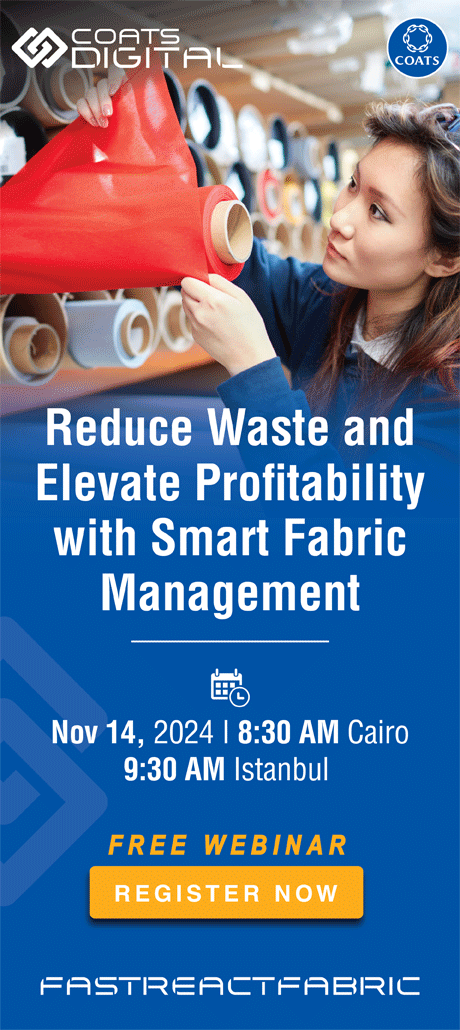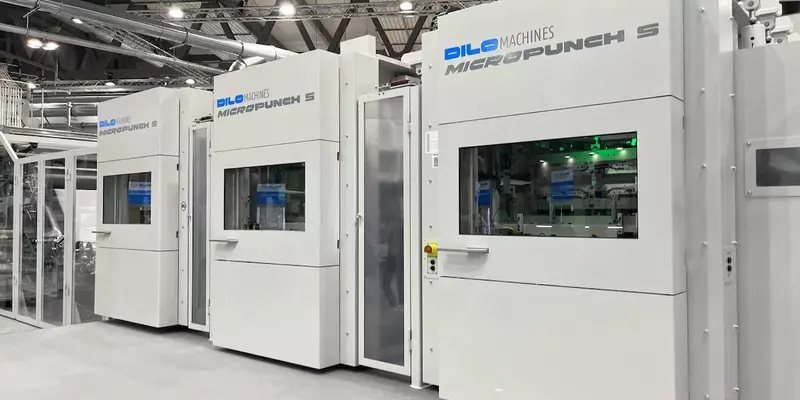The nonwovens industry continues to push at the barriers of what is materially and technically possible in pursuit of ever-more sustainable and competitive products.
At INDEX™23 in Geneva, German technology leader Dilo introduced the new MicroPunch needlepunching system which has been developed as a low-energy alternative to the hydroentangling process, largely for the production of wipes substrates and medical nonwovens with weights below 100gsm.
The company’s CEO Johann-Philipp Dilo explained that hydroentanglement – or spunlacing – was an extremely energy-intensive process.
“The spunlace process is based on high pressure jets which have to be formed continuously and all of that kinetic energy is completely lost,” he said. “In addition, there is continuous water consumption and losses, as well as fibre waste generation.”
Dilo’s Hyperpunch and Cyclopunch machines already operate at speeds of up to 150 metres per minute and stroke frequencies of 3,000 metres per minute.Continuous waterjets, however, create webs with good abrasion resistance and density and to achieve the same with needling requires needle densities of between 800-900 per square centimetre.
One million needles
This, incredibly, is what MicroPunch can do.
It builds on Dilo’s development of high-density boards containing 20,000 needles per metre with barbs of between 20-40 microns.
A significant increase in that needle density has now been achieved to up to 45,000 needles per metre of board – making full lines with over one million needles conceivable.
Needle change is greatly simplified with Dilo’s X22 modules which are mounted by sliding them into the board and they can be selectively changed as needed.
Dilo has all of the data from extensive testing to back up the effectiveness of MicroPunch technology, which it says can save 30% of the cost of the spunlaced production of a 40gsm nonwoven and 54% of the costs of producing a 100gsm product.
“The electrical energy can be as little as 25% of that required for spunlacing, with no water or gas consumption and a lower investment cost,” Johann-Philipp Dilo concluded.
Limits
Meanwhile, at between five and seven grams per square metre (5-7gsm), the new spunbonded nonwovens introduced by Fibertex Personal Care at INDEX™23 are the lightest so far produced.
Intended for diaper backsheet and core-wrap applications, the wafer-thin and extremely delicate materials have been made possible by the highly automised materials handling systems to be found in the most modern nonwovens manufacturing plants. These nonwovens are also intended to be run through the complex and extremely long converting machines that are employed to make multiple-component diapers which suggests almost zero margin for error.
Around ten years ago, the basis weight of fabrics for specific components was thought to have reached its lower limits at around 10gsm, but now it appears, working with strict tension control at low machine throughputs, it’s possible to go further and still achieve the necessary performance characteristics of the nonwovens.
Explaining the rationale behind the new development during a presentation at INDEX™23, Sales Director Kim Høgild Høgaard said that Fibertex Personal Care has an annual capacity of 50,000 tons of spunmelt fabrics at its plant in Denmark, and 100,000 tons at its plant in Malaysia, all produced on advanced Reifenhäuser Reicofil systems.
The company is among the world’s ten largest manufacturers of nonwovens for personal care, with a global market share of over 5% and sales in 2022 of €330 million.
Looking internally at the GHG emissions of its spunmelt production, the company has ascertained that just 9% of greenhouse gases (GHGs) generated at the Danish plant are accounted for by energy usage and 91% by polymer raw materials, so there is little scope for making further reductions in energy efficiency. At the Malaysia plant, the situation is rather different, with 29% of GHGs generated in production and 71% accounted for by polymer raw materials.
Plastic production
Meanwhile, overall plastic production in 2021 was over 390 million tons in 2021, according to figures quoted from Plastics Europe, and is forecast to double by 2050 based on the latest projections.
“Only 5.9 million tons of this production was based on bio-based plastics, with 32.5 million tons from post-consumer recycled plastics in 2021, and since the raw materials we employ only represent a small percentage of our emissions, looking to make a big change with new raw materials doesn’t seem like the way to go,” Kim Høgild Høgaard said. “Meanwhile, the lowest basis weights for these applications came down
from around 17gsm in 2000 to 15gsm in 2010, but haven’t decreased much since, so we believe this is the way forward.”
“In the production of these extremely lightweight sheets, the tensiles go down but with good tension control we can improve the lay-down for good processability,” said R&D Director Brian Udengaard. “The trick is in low throughput”.
“In the past, production has always been about maximising the speed of the lines and we have only talked about tonnages achieved, but things need to be considered in terms of square metres.”
Benefits
As a direct comparison of 10gsm and 5gsm products, the benefits are very apparent, with more linear loading per container. Rolls of 10gsm materials that are 26,500 metres long can be increased by almost 100% to 54,000 metres, resulting in less shipping, warehousing and material waste.
Ultimately, this results in a lower overall carbon footprint and lower costs.
When extended to the overall market of around two million tons for these components, the potential savings are a staggering, equating to:
- 555,000 metres of spunbond nonwovens, or 900,000 tons of CO2 eqv.
- 46,000 less container loads of product.
“This is not a ‘plug and play’ solution, and materials handling is not easy, with close collaboration required all along the supply chain,” Brian Udengaard said in conclusion. “Trials with converting partners are ongoing, but the first applications are close to commercialisation and the potential benefits are too big to be ignored.”



















